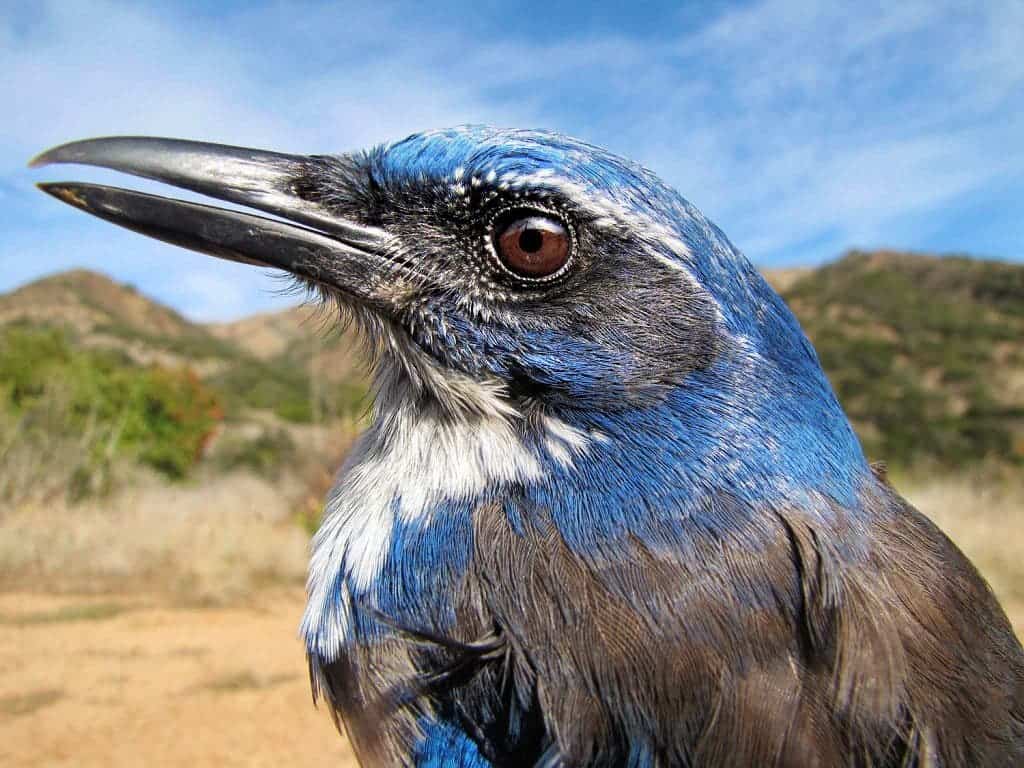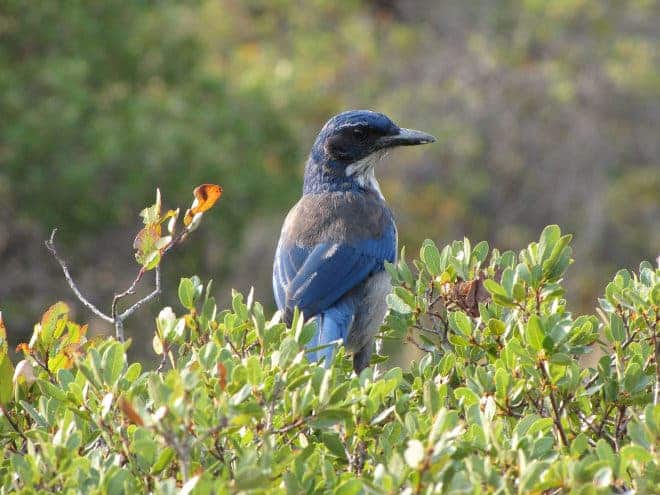When he was only 22 years of age, Charles Darwin sailed on the ship H.M.S. Beagle to the Galapagos Island on a trip that would later inspire him to write the theory of evolution. Paramount to his evolutionary theories was his study of finches. He identified 13 different species differentiated by beak size, and correctly concluded that the different beaks were adaptations to different diets available among the islands. This was a powerful example of divergent evolution – varieties which diverge from some original species. For instance, domestic dogs from wolves. One powerful driver of divergent evolution is physical isolation. Each left to its own island, Darwin’s finches evolved specialized traits. On California’s Santa Cruz Island, however, a most peculiar finding was made. Katie Langin, a biologist at Colorado State University, discovered two varieties belonging to the same species (Aphelocoma californica or the Scrub Jay) which diverged despite the absence of a physical barrier. Isolation drives speciation, but not in this case. Granted, the two Scrub Jay populations are essentially the same species. This is still definitely very, very weird – and we’re only beginning to understand what’s happening.
Langin first visited the island to study the jays in 2007, to work on her dissertation. She would lay out traps and tag the birds systematically. Suddenly, she realized that there were two populations belonging to the same species, but living in two different habitats: oak forest scrub jays which have shorter bills, good for cracking acorns, and pine forest dwelling jays with longer bills, which seem better adapted to prying open pine cones. But the two populations live on the same island. They’re not separated by large bodies of water, mountains or desert. When densely pack together, any hybrids or genetic strays eventually homogenize through breeding. Something happened, and Langin is only beginning to scratch the surface.
Of course, this isn’t the first example of divergence absent physical separation. For instance, the Northeast US endemic apple maggot fly used to exclusively munch on the the hawthorn tree, but once Europeans introduced apples it diverged. Two populations from the same species, each focused on one particular type of tree despite they shared the same space. Even in this case, the apple maggot fly hasn’t technically speciated. Neither did the jays – and might never will – but the point that needs to be made is that the basic tenets of evolutionary divergence might require revision.
“This was really surprising given that these habitats were directly adjacent to one another,” Langin told Wired, “and this bird is one of the most narrowly distributed birds in North America.”
She continued saying “a lot of work recently supports the idea that you don’t need to have geographic isolation in order to have evolutionary divergence occur. There are a lot of examples coming out now that show that at really small spatial scales you can actually get divergence.”
The jays have been living on Santa Cruz for at least one million years, but it’s still uncertain when the divergence took place, or why for that matter. Because the populations didn’t homogenize, it’s quite possible that each member is attracted to the defining characteristics of the population. If you’re living in the pine forest, it makes sense to find a mate that’s apt at opening pine cones.
“I feel like this is just the beginning of the story,” she says. “We’re just scratching the surface here.”
Her paper was published last week in the journal Evolution.











